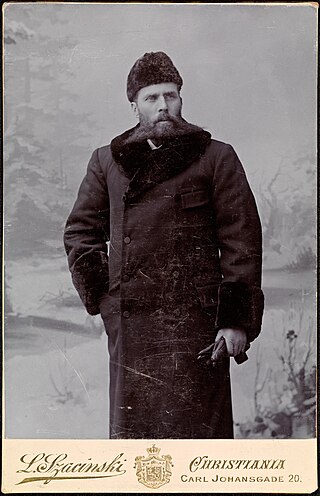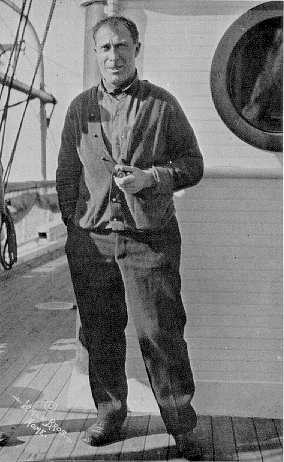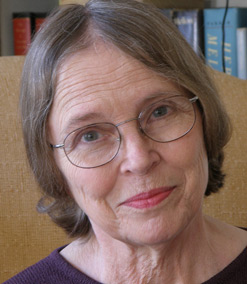Related Research Articles

John Joseph William Molesworth Oxley was an English explorer and surveyor of Australia in the early period of British colonisation. He served as Surveyor General of New South Wales and is perhaps best known for his two expeditions into the interior of New South Wales and his exploration of the Tweed River and the Brisbane River in what is now the state of Queensland.
The year 1839 in science and technology involved some significant events, listed below.

Otto Neumann Knoph Sverdrup was a Norwegian sailor and Arctic explorer.

Chaco Culture National Historical Park is a United States National Historical Park in the American Southwest hosting a concentration of pueblos. The park is located in northwestern New Mexico, between Albuquerque and Farmington, in a remote canyon cut by the Chaco Wash. Containing the most sweeping collection of ancient ruins north of Mexico, the park preserves one of the most important pre-Columbian cultural and historical areas in the United States.

The United States Exploring Expedition of 1838–1842 was an exploring and surveying expedition of the Pacific Ocean and surrounding lands conducted by the United States. The original appointed commanding officer was Commodore Thomas ap Catesby Jones. Funding for the original expedition was requested by President John Quincy Adams in 1828; however, Congress would not implement funding until eight years later. In May 1836, the oceanic exploration voyage was finally authorized by Congress and created by President Andrew Jackson.

Robert Abram Bartlett was a Newfoundland-born American Arctic explorer of the late 19th and early 20th centuries.
Below are notable events in archaeology that occurred in 1896.

Pueblo Bonito is the largest and best-known great house in Chaco Culture National Historical Park, northern New Mexico. It was built by the Ancestral Puebloans who occupied the structure between AD 828 and 1126.

The Villasur expedition of 1720 was a Spanish military expedition intended to check New France's growing influence on the North American Great Plains, led by Lieutenant-General Pedro de Villasur. Pawnee and Otoe Indians attacked the expedition in Nebraska, killing 36 of the 40 Spaniards, 10 of their Indian allies, and a French guide. The survivors retreated to their base in New Mexico.

Natalie Zane Babbitt was an American writer and illustrator of children's books. Her 1975 novel, Tuck Everlasting, was adapted into two feature films and a Broadway musical. She received the Newbery Honor and Christopher Award, and was the U.S. nominee for the biennial international Hans Christian Andersen Award in 1982.

Richard Wetherill (1858–1910), a member of a Colorado ranching family, was an amateur archaeologist who discovered, researched and excavated sites associated with the Ancient Pueblo People. He is credited with the rediscovery of Cliff Palace in Mesa Verde in Colorado and was responsible for initially selecting the term Anasazi, Navajo for ancient enemies, as the name for these ancient people. He also excavated Kiet Seel ruin, now in Navajo National Monument in northeastern Arizona, and Pueblo Bonito in Chaco Canyon, New Mexico.
A timeline of Chacoan history includes Chaco Culture National Historical Park, Aztec Ruins National Monument, Twin Angels Pueblo, Casamero Pueblo, Kin Nizhoni, Pierre's Site, and Halfway House.
George Hubbard Pepper was an American ethnologist and archaeologist. He worked on projects in New York, the Southwest and, most notably, the Nacoochee Mound in northeastern Georgia. His work with Frederick W. Hodge was sponsored by the Heye Foundation, Museum of the American Indian, and the Bureau of American Ethnology

Alexander Frederick Richmond Wollaston was an English medical doctor, ornithologist, botanist, climber and explorer. After qualifying as a surgeon in 1903, Wollaston decided to spend his life on exploration and natural history, travelling extensively; he wrote books about his travels and work, and was elected a Fellow of the Royal Geographical Society in 1907. As a tutor at King's College, Cambridge, he was shot dead by a deranged student.

Aleixo Garcia, also known in Spanish as Alejo García, was a Portuguese explorer and conquistador in service to Spain. He was a castaway who lived in Brazil and explored Paraguay and Bolivia. On a raiding expedition with a Guaraní army, Garcia and a few colleagues were the first Europeans known to have come into contact with the Inca Empire.

Benjamin Talbot Babbitt was a self-made American businessman and inventor who amassed a fortune in the soap industry, manufacturing Babbitt's Best Soap.

The Explorers Club is an American-based international multidisciplinary professional society with the goal of promoting scientific exploration and field study. The club was founded in New York City in 1904 and has served as a meeting point for explorers and scientists worldwide.
Fraser Range Station is a pastoral lease and sheep station located about 100 kilometres (62 mi) east of Norseman on the Eyre Highway in the Goldfields-Esperance region of Western Australia.

The 2004 congressional elections in Arizona were elections for Arizona's delegation to the United States House of Representatives, which occurred along with congressional elections nationwide on November 2, 2004. Arizona has eight seats, as apportioned during the 2000 United States census. Republicans held six of the eight seats and Democrats held two. This would be the last time until 2022 that Republicans would win six House seats in Arizona.

Lawrence Sprague Babbitt was a United States Army colonel. He was the father of Edwin Burr Babbitt.
References
- ↑ "American Museum of Natural History Research Library: Hyde Exploring Expedition (amnhc_2000029)". data.library.amnh.org. Retrieved February 25, 2023.
- ↑ "Open-file Report - 368". New Mexico Bureau of Geology & Mineral Resources. Retrieved February 25, 2023.
- ↑ Vivian, R. Gwinn; Hilpert, Bruce (2012). The Chaco Handbook: An Encyclopedic Guide (second ed.). University of Utah Press. pp. 155–156. ISBN 978-1-60781-195-4.